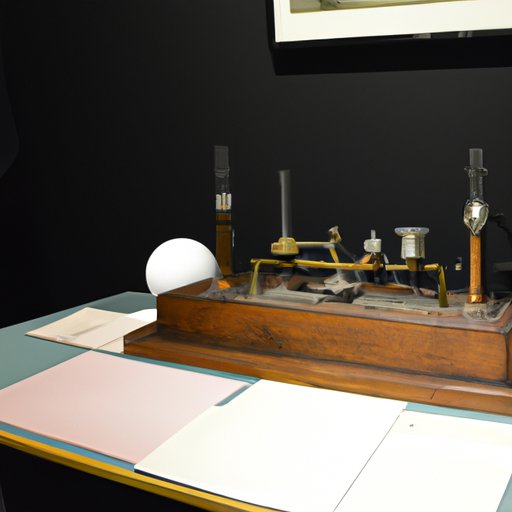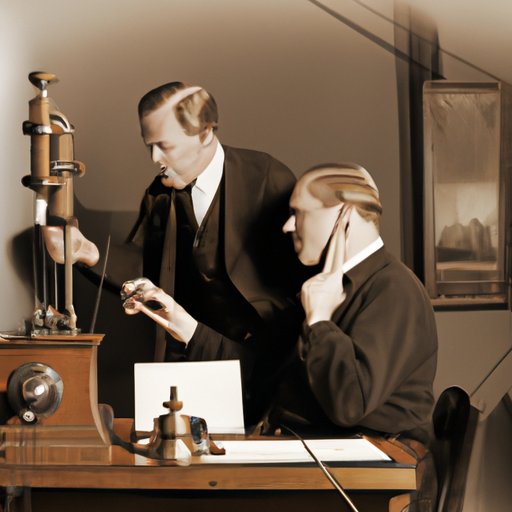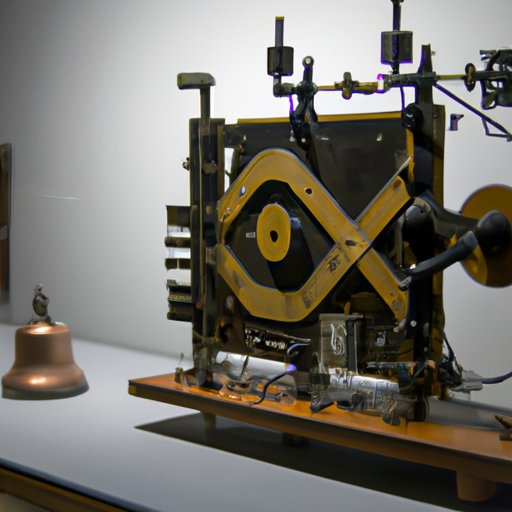Introduction
The telegraph is an invention that has revolutionized communication and changed the way we interact with one another. But what is a telegraph, and how does it work? In this article, we will explore the science and history behind the telegraph, investigating its components, different types of telegrams used today, the role of electrical signals in sending messages, and the lasting impact of the technology.

Exploring the Science Behind Telegraph Technology
The telegraph is a device that sends electrical signals to communicate messages over long distances. It is composed of two main components: a transmitter and a receiver. The transmitter is used to send messages, while the receiver is used to receive them. Messages are sent as electrical pulses, which are then converted into characters or symbols that make up words and sentences.
There are various types of telegrams used today. Morse code is the most common type, which uses a series of dots and dashes to represent letters and numbers. Other types include Baudot code, which is used for data transmission, and ASCII code, which is used for text-based messages. Each type of telegram has its own set of rules and conventions for sending and receiving messages.
In order for messages to be sent and received over long distances, electrical signals must be used. These signals travel along wires or through the air via radio waves. When a message is sent, the electrical signal is converted into a pattern of dots and dashes, which is then transmitted to the receiver. The receiver then converts the signal back into readable text.

Examining the Historical Impact of Telegraphs
The telegraph was first developed in the early 19th century by Samuel F.B. Morse and Alfred Vail. Morse code was developed shortly after and quickly became the standard for sending telegrams. The invention of the telegraph was revolutionary, significantly reducing the time it took to send messages over long distances. This allowed people to communicate more quickly and easily, revolutionizing the way we communicate.
The telegraph had far-reaching social, political, and cultural impacts. It enabled governments to communicate with each other more efficiently, leading to faster decision making and increased international cooperation. It also gave rise to the news industry, allowing newspapers to report on events from around the world in real time. Finally, the telegraph helped to spread new ideas and technologies, facilitating the growth of the industrial revolution.
Investigating the Modern Applications of Telegraphs
Today, the telegraph is still used in a variety of ways. Telegrams are often used to send important messages such as wedding announcements or legal documents. They are also used in emergency situations, such as when a ship is in distress at sea. Additionally, some companies use telegrams to send confidential information, as they provide a secure and reliable way to transmit sensitive data.
Looking to the future, there are many potential applications of telegraph technology. For example, wireless telegraphs could be used to send messages between vehicles, allowing for improved traffic flow and safety. They could also be used to facilitate communication between astronauts in space, as well as between unmanned aerial vehicles (UAVs). Finally, telegraphs could be used to create networks of connected devices, such as smart homes and self-driving cars.
Conclusion
The telegraph is an invention that has had a profound impact on the way we communicate. By exploring the science and history behind the technology, we can gain a better understanding of how it works and its various applications. From sending important messages to facilitating communication between vehicles and devices, the telegraph has revolutionized the way we interact with one another.
(Note: Is this article not meeting your expectations? Do you have knowledge or insights to share? Unlock new opportunities and expand your reach by joining our authors team. Click Registration to join us and share your expertise with our readers.)
